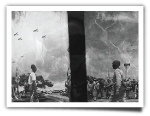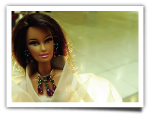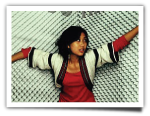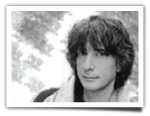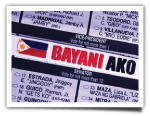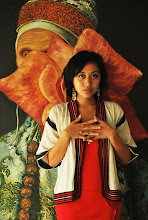If you are an artist, creative, or even just ma-art-eh then this Ted Talks video is a must-see.
Here, the author of the bestselling novel, “Eat, Pray, Love” speaks candidly about how artists create and come to be great. Listening to this made me think deeply about my own creative process and got me dreaming wistfully that someday I will feel what it’s like to have a poem barrel through me. It also happily reminded me of a group of Filipino artists that have known of this revolutionary creative technique around the same time as Plato. Meet the T’boli dreamweavers. The creators of the T’nalak, cloths designed in dreams.
Maria Elena P. Paterno explains what the Dreamweavers, taken from the book of the same name.
“T’nalak are woven dreams. T’boli women weave them, keen eyes and hand working together to judge lengths, to transfer patterns from memory to loom. T’nalak is made of the whitest abaca fibers connected end to end with the smallest possible knots dyed red and blackest brown. Its patterns are handed from mother to daughter or bestowed on the weaver in dreams by Fu Dalu, the spirit of the abaca. It is a product as much of quietness of spirit as it is of skill, for not all women weave, and not all weavers dream.
T’nalak is not some magical cloth created out of thin air of the mountains around Lake Sebu, where the T’boli live. It is born out of long and tedious work, of silences in the house when children are off to play, amid the smoke of the hearth that fills the longhouse when the meal is cooking. The T’boli believe that the production of good quality T’nalak requires the presence of Fu Dalu, sometimes personified as a spirit with white hair. But Fu Dalu chooses whose loom to grace with its presence. Those who do not adhere to the old ways, who have exchanged their bamboo baskets for the convenience of plastic, for instance, or who do not observe the abstinence required for certain pattern, they are not visited by the spirit of the abaca.”
(If there was a spirit of the radio ad, this humble ad copywriter would very much appreciate a visit.)
Photos scanned from the pages of Dreamweavers. Photos by Neal Oshima.
Here, the author of the bestselling novel, “Eat, Pray, Love” speaks candidly about how artists create and come to be great. Listening to this made me think deeply about my own creative process and got me dreaming wistfully that someday I will feel what it’s like to have a poem barrel through me. It also happily reminded me of a group of Filipino artists that have known of this revolutionary creative technique around the same time as Plato. Meet the T’boli dreamweavers. The creators of the T’nalak, cloths designed in dreams.
Maria Elena P. Paterno explains what the Dreamweavers, taken from the book of the same name.
“T’nalak are woven dreams. T’boli women weave them, keen eyes and hand working together to judge lengths, to transfer patterns from memory to loom. T’nalak is made of the whitest abaca fibers connected end to end with the smallest possible knots dyed red and blackest brown. Its patterns are handed from mother to daughter or bestowed on the weaver in dreams by Fu Dalu, the spirit of the abaca. It is a product as much of quietness of spirit as it is of skill, for not all women weave, and not all weavers dream.
T’nalak is not some magical cloth created out of thin air of the mountains around Lake Sebu, where the T’boli live. It is born out of long and tedious work, of silences in the house when children are off to play, amid the smoke of the hearth that fills the longhouse when the meal is cooking. The T’boli believe that the production of good quality T’nalak requires the presence of Fu Dalu, sometimes personified as a spirit with white hair. But Fu Dalu chooses whose loom to grace with its presence. Those who do not adhere to the old ways, who have exchanged their bamboo baskets for the convenience of plastic, for instance, or who do not observe the abstinence required for certain pattern, they are not visited by the spirit of the abaca.”
(If there was a spirit of the radio ad, this humble ad copywriter would very much appreciate a visit.)
Photos scanned from the pages of Dreamweavers. Photos by Neal Oshima.
